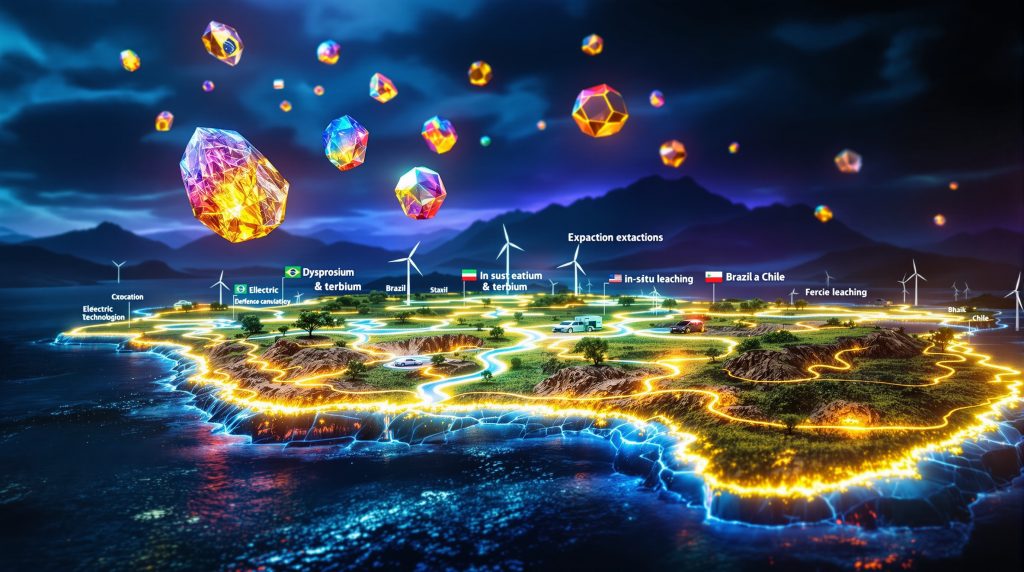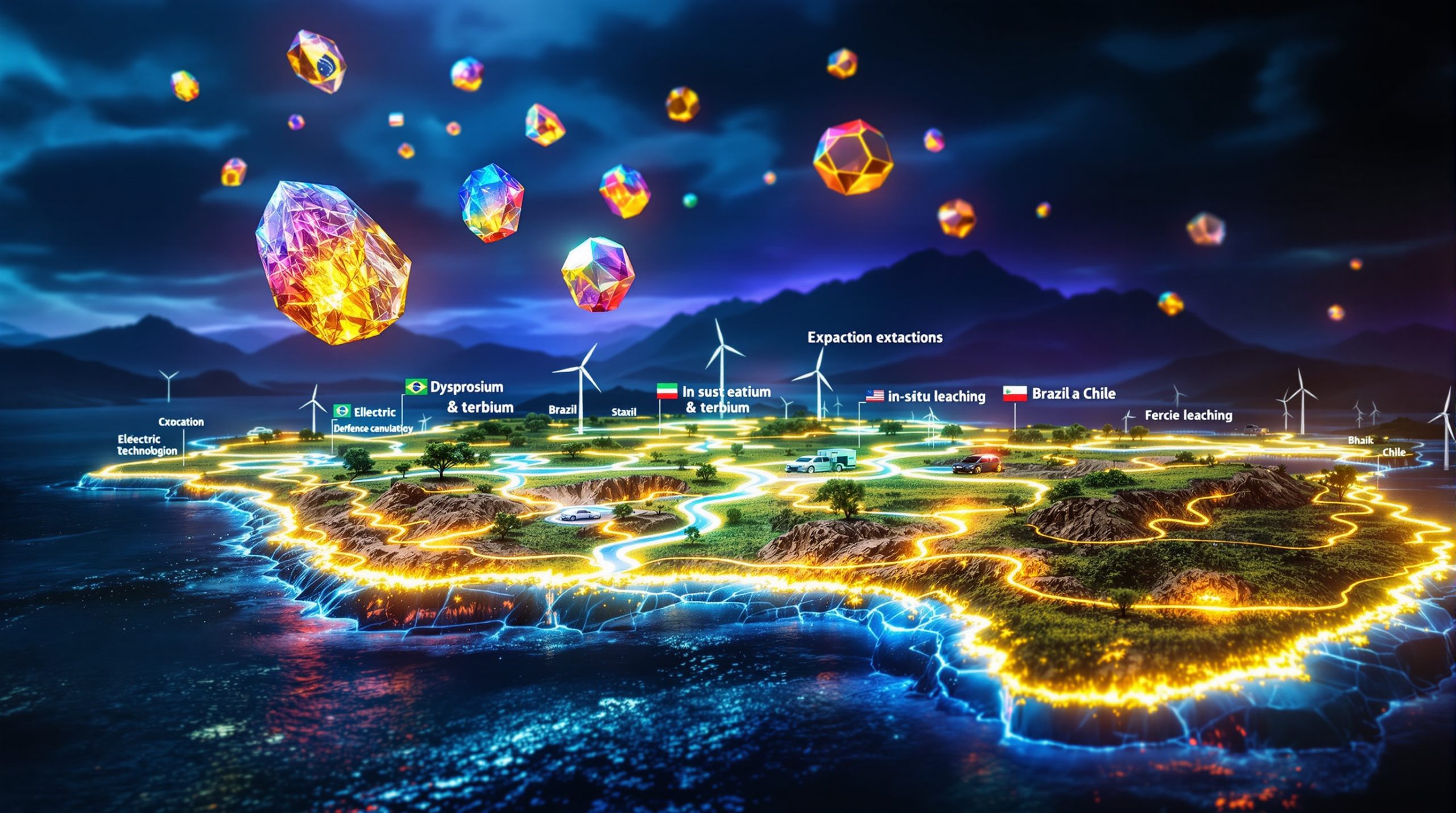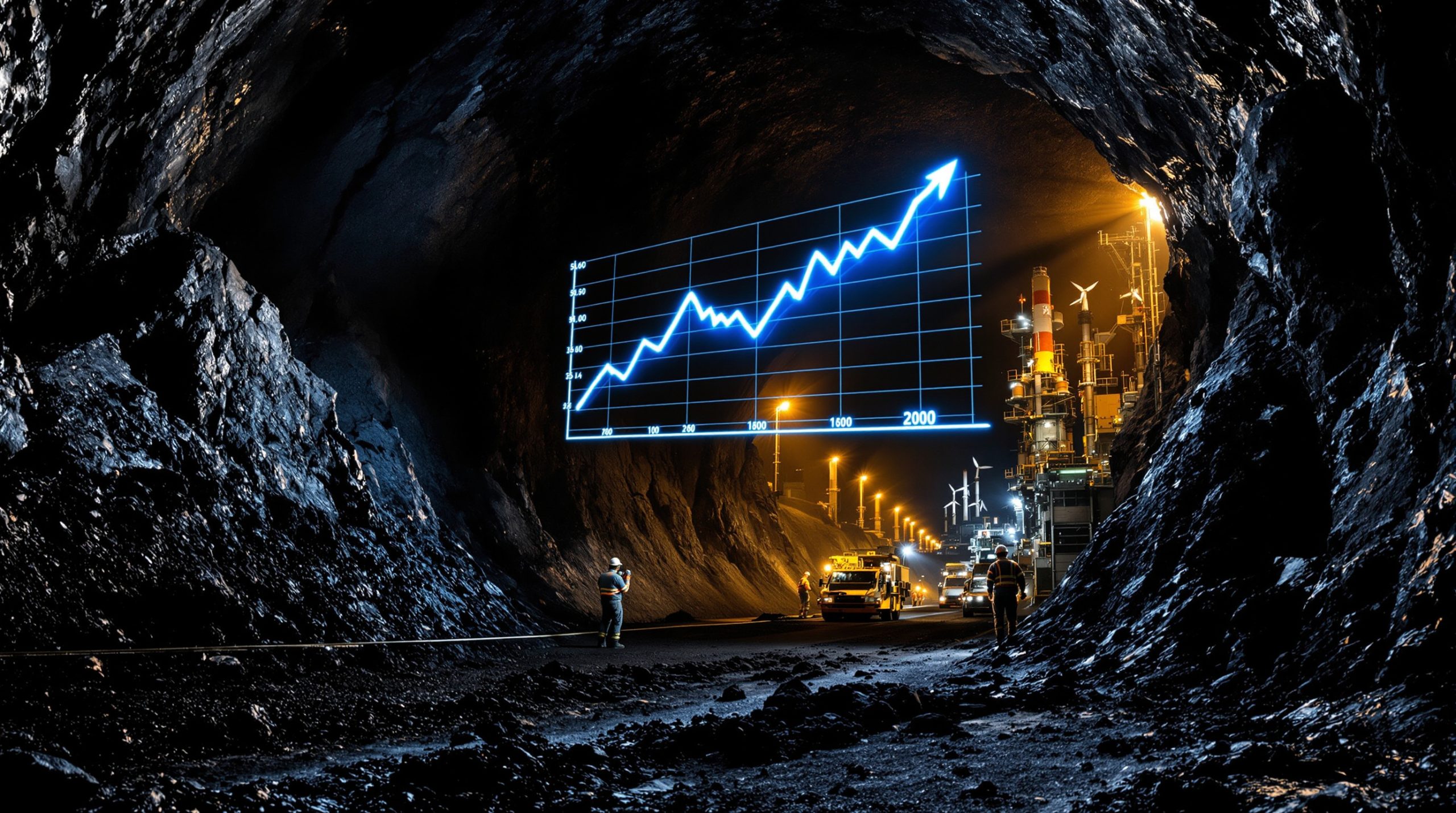Understanding Ionic Clay Deposits: Nature's Rare Earth Treasure Troves
Ionic clay deposits represent a geological marvel where rare earth elements (REEs) exist in a weakly bonded state with clay particles. Unlike conventional hard-rock deposits that require intensive crushing and grinding, these unique formations allow for extraction through simple leaching processes. Their exceptional value stems from containing higher concentrations of heavy rare earth elements (HREEs), particularly dysprosium and terbium, which are crucial components in high-performance magnets.
What makes these deposits truly remarkable is their scarcity. Historically, they've been primarily found in southern China and select Southeast Asian countries. The discovery of similar deposits in Brazil and Chile represents a significant shift in the global rare earth landscape, potentially breaking China's longstanding monopoly on these critical resources.
The Critical Role of Heavy Rare Earths in Modern Technology
Heavy rare earths, especially dysprosium and terbium, serve as essential temperature stabilizers in permanent magnets. Though they constitute only 1-3% of a magnet's composition, these elements dramatically enhance temperature resistance – from a mere 60°C without them to an impressive 150-240°C when included.
This temperature stability proves crucial for numerous applications:
- Electric vehicle motors that generate significant heat during operation
- Wind turbine generators exposed to varying environmental conditions
- Advanced defense systems requiring reliable performance in extreme environments
- Industrial motors operating in high-temperature settings
As global demand for these elements is projected to double from approximately 2,500 tonnes annually to 5,000 tonnes by 2030, developing alternative supply sources has become increasingly urgent. Furthermore, the critical minerals energy transition depends heavily on securing reliable sources of these rare earth elements.
Brazil's Emerging Ionic Clay Landscape
Brazil hosts several promising ionic clay deposits, with concentrations primarily in the mineral-rich states of Minas Gerais and Goiás. These formations represent geological "copy-paste" versions of the productive Chinese deposits, according to industry experts familiar with both regions.
The Minas Gerais Potential
The Pocos de Caldas alkaline complex in Minas Gerais contains significant ionic clay deposits with diverse rare earth elements in accessible ionic form. The weathering processes in this region have created ideal conditions for rare earth concentration in clay minerals, making them potentially easier to extract than traditional hard-rock mining requires.
Goiás Project Development
The Carina Module in Goiás represents one of Brazil's most promising ionic clay discoveries. Initial testing has yielded impressive recovery rates:
- Approximately 69% recovery for neodymium-praseodymium (NdPr)
- Around 48% recovery for the critical dysprosium-terbium (DyTb) combination
The project has reached several key milestones, with a Preliminary Feasibility Study (PFS) completed in late 2023 and environmental assessment approval anticipated by early 2024. This progress paves the way for early infrastructure work to begin in 2024, followed by a comprehensive Feasibility Study targeted for Q1 2026, with production projected to commence around 2028.
Additional Exploration Zones
Beyond these primary sites, exploration continues throughout:
- Bahia state, where favorable weathering profiles have been identified
- The Amazonas region, offering potential for new discoveries
- Various zones throughout the Brazilian Shield geological formation
Chile's Strategic Ionic Clay Development
Chile's entry into the rare earth market centers on the Penco Module in the Bio-Bio region, marking a significant shift in the country's mining focus beyond traditional copper operations.
The Bio-Bio Region Resources
The Penco Module covers approximately 6 square kilometers and contains measured and indicated resources of about 62,900 tonnes of total rare earth oxides (TREO), with a notable concentration of valuable heavy rare earth elements. The Chilean government has increasingly recognized rare earths as strategic minerals, with a noticeable shift in policy support for their development.
Environmental Sustainability Focus
The Chilean project emphasizes environmental responsibility through innovative approaches:
- Zero permanent tailings storage facilities
- Water recirculation systems exceeding 95% efficiency
- Comprehensive reforestation programs using native species
- Minimal surface disturbance through selective extraction techniques
These approaches reflect the growing mining sustainability transformation occurring across the industry, with ionic clay projects often leading the way in environmental stewardship.
Development Timeline
The project is advancing steadily with permitting approvals expected by late 2023, followed by a Feasibility Study targeted for completion in Q3 2024. Investment decisions will follow these milestones, with production anticipated to begin around 2027.
The Global Significance of South American Ionic Clays
Diversifying Beyond China's Control
The emergence of South American ionic clay deposits represents a critical opportunity to diversify global rare earth supply chains. Historically, China has maintained dominance through an integrated approach from mine to magnet production, offering finished products at competitive prices that discouraged Western investment in alternative sources.
This dominance created vulnerability in global supply chains, most notably demonstrated during the 2010 rare earth crisis when export restrictions caused significant price volatility and supply concerns. Recent restrictions on heavy rare earth exports from China have renewed urgency among Western manufacturers to secure alternative sources, leading to increased interest in establishing a critical minerals reserve in several countries.
Technical and Environmental Advantages
South American ionic clay deposits offer several compelling advantages over traditional rare earth mining:
| Aspect | Traditional REE Mining | Ionic Clay Extraction |
|---|---|---|
| Processing | Energy-intensive crushing, grinding, complex chemical separation | Simple leaching with mild reagents |
| Environmental Impact | Large open pits, significant waste rock, tailings ponds | Minimal excavation, no crushing, reduced waste |
| Water Usage | High consumption with limited recycling | >95% water recirculation possible |
| Production Costs | Higher capital and operating expenses | Lower CAPEX and OPEX potential |
| Land Rehabilitation | Complex, long-term remediation | Faster restoration potential |
Innovative Extraction Technologies
In-Situ Leaching Methodology
The extraction of rare earths from ionic clay deposits employs in-situ leaching (ISL) or in-situ recovery (ISR) techniques, representing a significant departure from conventional mining methods. This process follows a systematic approach:
- Injection of mild lixiviants (leaching solutions) into the clay deposit
- Dissolution of rare earth elements from clay particles
- Recovery of the pregnant solution containing dissolved REEs
- Processing of the solution to precipitate a mixed rare earth carbonate
- Progressive land rehabilitation after extraction
This approach minimizes surface disturbance while maximizing resource recovery, addressing many environmental concerns associated with traditional mining operations.
Environmental and Operational Benefits
The extraction approach offers substantial advantages:
- Minimal surface disturbance compared to open-pit mining
- Reduced energy requirements with no crushing or grinding
- Lower chemical usage than traditional rare earth processing
- Faster land rehabilitation potential after mining activities
- Significantly reduced waste generation
Additionally, advanced mine reclamation innovation techniques are being incorporated into these projects from the planning stage, ensuring environmental impacts are minimized throughout the lifecycle of operations.
Vertically Integrated Development Strategy
From Mine to Magnet
Both Brazilian and Chilean projects are pursuing vertical integration strategies, moving beyond simple resource extraction to value-added processing:
- Initial production of mixed rare earth carbonate at the mine sites
- Separation facilities to produce individual rare earth oxides
- Metallization and alloy production capabilities
- Strategic partnerships with magnet manufacturers
This integrated approach seeks to address the full supply chain rather than simply exporting raw materials, creating additional value and security.
US-Based Processing Hub Development
A key component of the strategy involves establishing processing capabilities in the United States:
- Separation facility location selection in progress
- Pilot processing at Virginia Tech University beginning operations in Q4 2023
- First processing line operational by late 2023
- Full pilot plant operational by Q1 2026
- Engineering design work with Hatch beginning in late 2023
This US-based processing strategy aligns with growing government support for domestic rare earth supply chains and critical mineral security. According to a recent study published in Science Direct, this diversification is crucial for reducing supply chain vulnerabilities in critical technology sectors.
Environmental Stewardship in Rare Earth Development
Sustainable Mining Practices
Both Brazilian and Chilean projects emphasize environmental responsibility through:
- Zero permanent tailings storage facilities
- Water recirculation systems exceeding 95% efficiency
- Minimal surface disturbance through selective extraction
- Progressive land rehabilitation during operations
Post-Mining Land Use Planning
Comprehensive plans for post-extraction land use include:
- Reforestation with native species
- Agricultural land restoration where appropriate
- Biodiversity conservation initiatives
- Community-driven land use planning
This approach represents a significant improvement over historical rare earth mining practices that often resulted in significant environmental degradation. The implementation of modern mine planning techniques has been instrumental in developing these more sustainable approaches to rare earth extraction.
Global Context: Comparing South American Projects
Global Ionic Clay Development Landscape
| Region | Project Status | Production Timeline | Key Advantages |
|---|---|---|---|
| Brazil | PFS completed, environmental assessment underway | 2028 | High HREEs content, favorable geology |
| Chile | Advanced permitting, FS in progress | 2027 | Strong environmental focus, government support |
| China | Multiple operating mines | Current producer | Established supply chain, technical expertise |
| Myanmar | Some production, regulatory challenges | Current producer | High grades, but regulatory uncertainty |
| Madagascar | Early exploration | 2030+ | Promising geology, early-stage |
| Australia | Research on clay-hosted REEs | 2030+ | Stable jurisdiction, early research stage |
This global context highlights the potential significance of South American projects in diversifying the rare earth supply landscape, particularly for heavy rare earths critical to high-performance magnets. As The Guardian reports, Brazil's transition towards developing these strategic resources represents a significant shift in the country's mining sector.
Challenges and Opportunities Ahead
Technical Hurdles
Several technical challenges remain to be addressed:
- Optimizing leaching chemistry for specific mineralogy
- Scaling up laboratory results to commercial production
- Developing efficient separation technologies for individual elements
- Establishing consistent product quality for magnet manufacturing
Market and Financial Considerations
The projects face several market-related challenges:
- Securing offtake agreements with end users
- Competing with established Chinese supply chains
- Obtaining financing for vertically integrated operations
- Managing price volatility in rare earth markets
Investment Landscape for South American Ionic Clay Projects
Capital Requirements
Developing these resources requires significant investment across the value chain:
- Mining operations and initial processing: $200-300 million per project
- Separation facilities: $300-400 million
- Metallization and alloy production: $150-200 million
- Total vertical integration: $650-900 million
Government Support Mechanisms
Various government initiatives may support development:
- Subsidized debt instruments for critical minerals
- Strategic investment from government entities
- Floor price mechanisms to ensure project viability
- Expedited permitting for strategic resources
The growing recognition of rare earths as critical materials has led to increased government support, particularly in the United States and European Union, potentially improving investment conditions for these projects.
FAQ: Ionic Clay Rare Earth Deposits in Brazil and Chile
What makes ionic clay deposits different from traditional rare earth mines?
Ionic clay deposits contain rare earth elements weakly bonded to clay particles, allowing for simpler extraction using leaching solutions rather than energy-intensive crushing, grinding, and complex chemical processing required for hard-rock deposits.
Why are heavy rare earths like dysprosium and terbium so important?
These elements enable permanent magnets to maintain their magnetic properties at high temperatures (150-240°C versus just 60°C without them), which is essential for electric vehicles, wind turbines, and other applications where motors generate significant heat.
How do these projects contribute to supply chain security?
By developing rare earth sources outside of China (which currently dominates global production), these projects help diversify supply chains, reduce geopolitical risks, and ensure consistent availability of critical materials for Western manufacturers.
What environmental advantages do ionic clay projects offer?
These projects typically require no tailings dams, use minimal water (with 95%+ recirculation), cause less surface disturbance, and allow for progressive land rehabilitation compared to traditional mining operations.
When will these South American projects begin producing rare earths?
The Chilean project is targeting production around 2027, while the Brazilian project is expected to commence operations around 2028, subject to permitting, financing, and construction timelines.
What role do governments play in developing these resources?
Governments increasingly view rare earths as strategic materials and are implementing supportive policies including expedited permitting, financial incentives, research funding, and strategic stockpiling to encourage new supply development.
Want to Be First to Know About Major Mineral Discoveries?
Don't miss out on the next big discovery opportunity in rare earths or other critical minerals. Discovery Alert's proprietary Discovery IQ model delivers instant notifications on significant ASX mineral discoveries, providing you with actionable insights before the broader market. Learn more at Discovery Alert.




